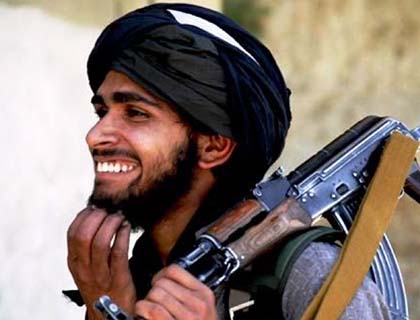After announcement of Mullah Omar’s death, everyone perhaps agreed that the transition in leadership of the Taliban would profoundly impact the Taliban. However, few were foreseeing a potential split of the group who remained largely intact in last fourteen years of its insurgency against the government of Afghanistan. With the rifts among Taliban widening, there are now serious questions over the fate of the main insurgent group in Afghanistan. According to media reports, the head of the Taliban political office in Qatar Sayed Tayeb Agha has resigned his post, criticizing the way of selection of Mullah Akhtar Mohammad Mansoor as the group’s new leader and the fact that Mullah Omar’s death was kept secret for two years. In the meantime, Mullah Mansoor Dadullah, a powerful ground commander of the Taliban, has opposed leadership of Mullha Akhtar Mansoor and announced his backing to Mullah Omar’s son Mullah Yaqub. Resignation of Sayed Tayeb Agha is coming as the latest signs of a growing rift among Taliban senior leaders over selection of Mullah Akhtar Mansoor as replacement for Mullah Omar.
The rising voices of opposition from inside the Taliban senior leadership to Mullah Akhtar Mansoor’s succession indicates a far greater division among the Taliban than what many expected before. Initially it was thought the Taliban would overcome the leadership vacuum stemmed from the announcement of death of its supreme leader by choosing a new leader through consultative processes with participation of a large spectrum of Taliban senior members including political and military figures. The founder and former leader of the Taliban himself was chosen as supreme leader and named as ‘commander of the faithful’ by endorsement of hundreds of Taliban members and clerics. The top seven-member council of the Taliban, the so-called Quetta Shura, used to run the Taliban through consultations. The norm was a political tradition and a religious obligation for the Taliban leaders. However, what followed the announcement of the death of Mullah Omar, took many by surprise. The Taliban senior leadership failed to go by traditions in decision-makings for selection of a new leader for the group.
The failure, however, had roots in the group’s internal politics in the past particularly during some recent years when Mullah Omar mysteriously had been kept away from running the group’s affairs and died in unknown circumstances. In recent years, the newly chosen leader of the Taliban Mullah Akhtar Mansoor had managed to dominate the group’s supreme council and appoint his loyalists to key positions in recent years. Taking advantage of his authority and power, Mansoor seemingly imposed himself as new leader through being chosen by a small group of senior members of the Taliban. It is also reasonable to think that the selection of the new leader of the Taliban may have been manipulated by outside actors such as government and intelligence agencies who have considerable influence over the Taliban. The way of selection of the new leader has triggered a crisis for the Taliban. A number of Taliban members have labeled the way of selection of the new leader as a ‘coup’ by Mullah Mansoor and his loyalists.
With the deepening crisis of leadership of the Taliban, it is now clear that the post-Mullah Omar Taliban will not be the same group as it was for last fourteen years of war in Afghanistan. There will a different Taliban: at best a fragmented and weakened group. Some even predict a potential breakup or disintegration of the insurgent group. The erosion of the senior leadership of the group has already begun. Some senior members of the Taliban like Sayed Tayyeb Agha, who have served for the group’s insurgency over last fourteen years, have suggested their way parting from the group. Both sides are drumming on the key issues of differences. At this stage, both sides seem to be far from being able to make compromises over the leadership of the group. Mullah Mansoor’s camp is continuing to monopoly the power in top decision making circles. This is while the opposition figures indicate stiff opposition to the new leadership and the circumstances of Mullah Omar’s death.
However, despite the fact the Taliban will be a fractured and weakened insurgency group, it is still unclear how the main leadership of the group would tackle the ongoing leadership crisis of the group. However, given the group’s resiliency during the past over-a-decade of the conflict, the less likely scenario is that the Taliban still may be able to avoid the worst scenarios. The seven-member Quetta Shura, which is the highest leadership body of the group, is very powerful. The new leader of the Taliban and his loyalists has the grip of power in the council. It is possible the supreme council of the Taliban overcome its own internal differences over the issue and cracks down the opposition who is seemingly at a weaker stance. In this case, the opposition centered on Mullah Yaqub and Mullah Qayum Zakir would get weakened against a more consolidate group under the new leader.
In any case, Taliban would further lose to other groups particularly the newly emerging Islamic State group. In worst case, the Taliban would split into two or three major rival groups which would leave them considerably weakened against a government crackdown. In lesser worse case for the Taliban, it is highly likely the group would divide into a main Taliban and other smaller splinter groups. At any case, the splinter groups could considerably challenge the main insurgency and even get involved in turf fighting across the country. This would further lead to strength of other militant groups such as the Islamic State group which is in an open battle with the Taliban. Despite that a fragmented Taliban would provide the best opportunity for the government to fight the insurgency, it could potentially weaken a chance of peace with all the insurgent groups.

